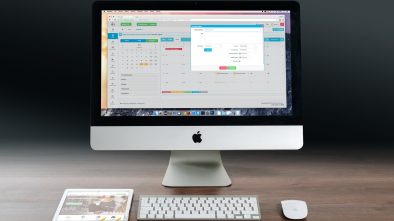DNS Servcer Not Responding Problem: How To Fix IT?
The Domain Name System or DNS is a part inside your PC that assists in translating the domain names used by the host’ into an IP address. When looking for a certain webpage, the address you enter into the search bar is called a domain. The IP address, therefore, comes about when a domain address is interpreted into a numeric form.
DNS Server Not Responding—How Do You Fix It?
Imagine a situation where the DNS was not available. What would happen is that web users would have a very hard time accessing the internet. A user would need to memorize the IP address of the site that they wished to visit, and then input it into the search bar.
It is the reason why when the DNS settings are not working or are not responding, you cannot gain access to the internet. Apart from encountering the DNS not found error, you are also likely to come across the DNS not responding error.
Additional errors pertaining to this problem include DNS is not responding error or DNS not available. When you receive this type of error, it means that the link associated with that particular website has expired. It could also mean that the hosts’ primary database got delegated.
When DNS is unavailable, the implication is that the host is no longer operational. It could also mean that the host has gone out of business. Server failures mean that your PC may have a corrupted server.
You can use a number of techniques to assist you to resolve this particular error. They include:
DNS Server Replacement
Google has provided a DNS server that is open and accessible to all web-users around the world. It manages this server, and users do not have to pay anything to access it. For a user to use the Google server, they need to manually replace the ones they are using.
You can do this by accessing your connection settings. Press the start menu and right click on it and then select ‘Network Connections’. It works for computers running on the Windows operating system.
It will open the network and internet window where you will be required to select the kind of connections you want to use. Proceed to the ‘change adapter options’ section and right click on it. From here, you will need to check its properties to ensure that you are using IPV4/TCP.
Select properties again and enter the following address for the DNS server—8.8.8.8 for the DNS server preferences. Enter 8.8.4.4 for the alternate preferences.
Make Sure IPV6 Is Disabled in Your Computer
An alternative approach would require you to make sure that IPV6 is disabled on the computer. IPV6 is a newer protocol that was introduced to address the problem that arose when IPV4 was exhausted. To turn it off, use the same procedure as described above.
When you access the connection status page, make sure to uncheck the IPV6 box. In some cases, the reason why the server is not responding could be because your router is experiencing some down time.
It is an issue that applies to both Mac and Windows computers. If you suspect that this is the cause of your problems, try to restart the router and your computer. Restarting the router is a simple solution that will allow you to access the internet normally after dealing with the temporary issue.
Fix DNS Issues for iOS
Mobile handsets also experience these problems. For iOS, start by selecting the Wi-Fi network you would like to use. Try and locate a circle that has an ‘I’ in the middle and select it. Having done this, proceed to the next field which is labeled DNS. Input the address.
How to Solve the DNS Error on an Android Device
If you have ever looked at the settings on an Android device, you may have noted that they are normally in default. In many cases, these settings are not the best as they could cause your phone to become slow.
To change the settings in devices using this OS, you will need to obtain a special application. Many such applications are available in the Play Store. DNSet and DNS Changer come highly recommended.
You will need to root your handset to alter the settings.
Manually Fixing DNS Settings on a Mac Computer
Look for the system preferences and navigate to the network pane. Once here, look for the network connection in the list located on the left side of the screen. Click the option labeled ‘Advanced’ before choosing ‘DNS’.
While here, you will come across a list of IP addresses. The ones that are grayed out are not active while the ones in black are operational. Disable all the active ones.
Once disabled, click on the + button and input 208.67.222.20. Click on the same button again and input 208.67.222.222. Apply the changes and exit.
The guidelines described above will help you get rid of the DNS not responding error. If you are using an Android device, you should note that the settings in place are meant to assist you to control the device’s data consumption levels. If you are on a metered connection, it is best to leave them as they appear.



